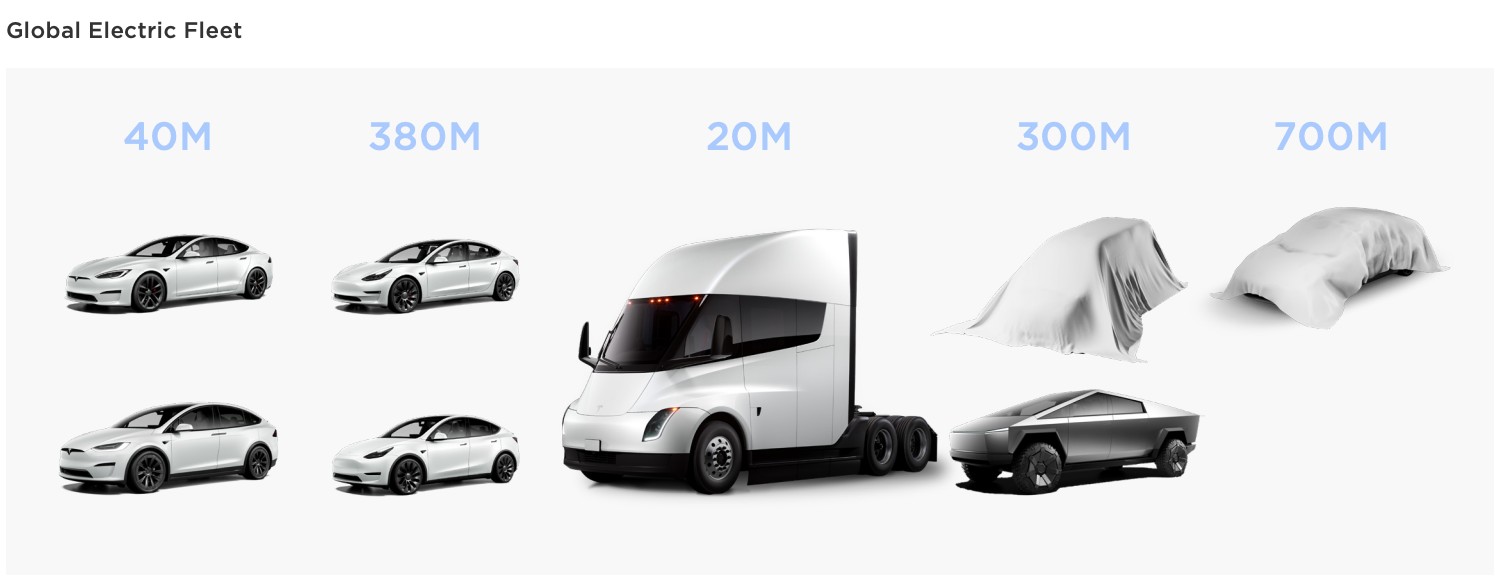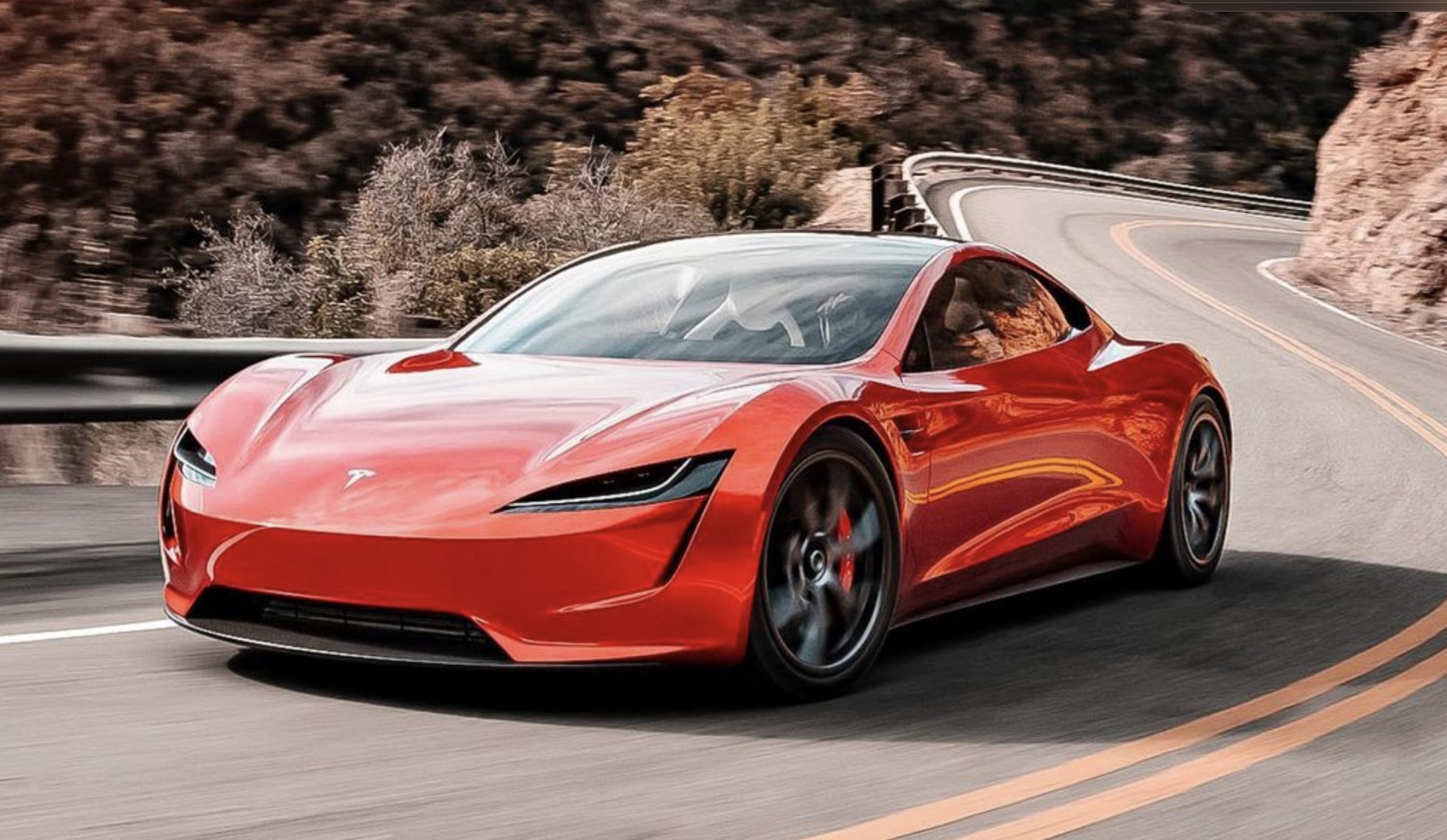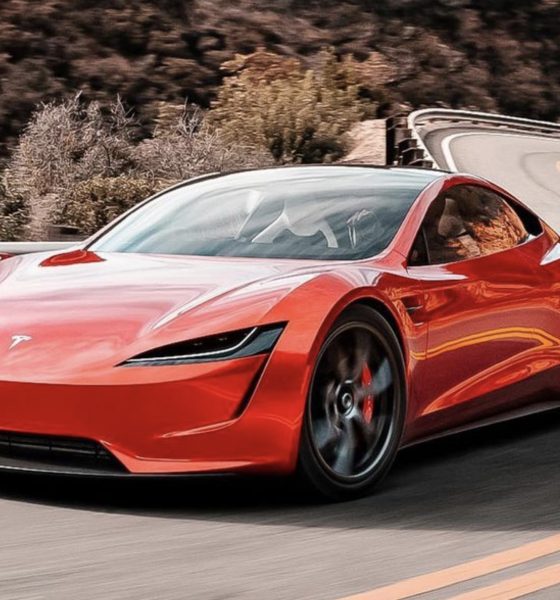Tesla’s Master Plan Part 3 detailed the final portions of how the electric automaker plans to influence and dominate the global market through sustainability. It featured plans for mass production of a new compact model, volume projections for the Cybertruck, and new details on other commercial vehicles, but it was void of the Roadster.
The Tesla Roadster has been one of the company’s crown jewels, but it has been teased for so many years that some fans are wondering if it will ever actually reach production.
In the third iteration of the Master Plan, Tesla broadened its scope for how it can achieve a monumental transition to sustainable powertrains across the entire market, but also how it can achieve a mass production forecast of its entire vehicle lineup.
It featured key contributors to that plan, which include the heavily rumored compact sedan that could be built at its upcoming Gigafactory in Mexico, as well as commercial vehicle applications like a van and two different pack sizes for the Semi.
What it was void of, however, is the Roadster, and the fact that the Master Plan Part 3 was geared toward Tesla’s long-term goals and major contributors to how it can help the world achieve a sustainable future may be the very reason it was not included.
The Roadster is an extremely low-volume vehicle. It costs $250,000, it is apparently going to feature SpaceX cold-gas thrusters for face-melting acceleration, it might have hovering capabilities, but its production has always been derailed by some sort of circumstance beyond Tesla’s control.
Set to make its first deliveries in 2021, the Roadster was put on the back burner, no pun intended, by the COVID-19 pandemic, which basically disrupted nearly every company in the sector in some way. With Tesla looking to survive supply chain constraints and fulfill orders for its vehicles, the Roadster simply was not a priority. Tesla pushed production back to 2022.
Tesla Roadster 2.0 to be better on “basically every metric” than prototype
2022 came and went, and CEO Elon Musk detailed late last year that the vehicle could come this year, as long as Tesla avoided supply chain “mega drama.”
But it seems the Roadster won’t be here this year, either. Tesla will instead focus on Cybertruck production and ramping up its factories for mass electrification, and the Roadster simply does not fit those plans.
Chief Designer for Tesla Franz von Holzhausen said recently that Tesla was in the process of developing the Roadster, but it just won’t make it to the production phases this year:
“We’re developing the car. I think you know we have priorities as a company, and the priorities are mass electrification. And Roadster is not a mass product. So, unfortunately, you know it takes its kind of position, but we are working on it in earnest. And I think the time that we’ve taken had enabled us to really improve on basically every metric that we set out to establish when we first debuted that.”
Last evening’s release of the Master Plan Part 3 revealed a lot of details, but the global fleet only included mass-market vehicles that will contribute to the company’s plan to increase the volume of cars it puts on the road.
Credit: Tesla
The Roadster simply does not fit those plans, so don’t be discouraged if you’re awaiting any updates on its production.
Nevertheless, there is reason to be slightly frustrated with the timeline of the vehicle, especially as it continues to be pushed back for a multitude of reasons. We can only hope the vehicle will be out within the next few years, and even if it is slightly different than what was shown in 2020 and what some customers are expecting.
I’d love to hear from you! If you have any comments, concerns, or questions, please email me at joey@teslarati.com. You can also reach me on Twitter @KlenderJoey, or if you have news tips, you can email us at tips@teslarati.com.

News
Tesla FSD fleet is nearing 7 billion total miles, including 2.5 billion city miles
As can be seen on Tesla’s official FSD webpage, vehicles equipped with the system have now navigated over 6.99 billion miles.

Tesla’s Full Self-Driving (Supervised) fleet is closing in on almost 7 billion total miles driven, as per data posted by the company on its official FSD webpage.
These figures hint at the massive scale of data fueling Tesla’s rapid FSD improvements, which have been quite notable as of late.
FSD mileage milestones
As can be seen on Tesla’s official FSD webpage, vehicles equipped with the system have now navigated over 6.99 billion miles. Tesla owner and avid FSD tester Whole Mars Catalog also shared a screenshot indicating that from the nearly 7 billion miles traveled by the FSD fleet, more than 2.5 billion miles were driven inside cities.
City miles are particularly valuable for complex urban scenarios like unprotected turns, pedestrian interactions, and traffic lights. This is also the difference-maker for FSD, as only complex solutions, such as Waymo’s self-driving taxis, operate similarly on inner-city streets. And even then, incidents such as the San Francisco blackouts have proven challenging for sensor-rich vehicles like Waymos.
Tesla’s data edge
Tesla has a number of advantages in the autonomous vehicle sector, one of which is the size of its fleet and the number of vehicles training FSD on real-world roads. Tesla’s nearly 7 billion FSD miles then allow the company to roll out updates that make its vehicles behave like they are being driven by experienced drivers, even if they are operating on their own.
So notable are Tesla’s improvements to FSD that NVIDIA Director of Robotics Jim Fan, after experiencing FSD v14, noted that the system is the first AI that passes what he described as a “Physical Turing Test.”
“Despite knowing exactly how robot learning works, I still find it magical watching the steering wheel turn by itself. First it feels surreal, next it becomes routine. Then, like the smartphone, taking it away actively hurts. This is how humanity gets rewired and glued to god-like technologies,” Fan wrote in a post on X.
News
Tesla starts showing how FSD will change lives in Europe
Local officials tested the system on narrow country roads and were impressed by FSD’s smooth, human-like driving, with some calling the service a game-changer for everyday life in areas that are far from urban centers.

Tesla has launched Europe’s first public shuttle service using Full Self-Driving (Supervised) in the rural Eifelkreis Bitburg-Prüm region of Germany, demonstrating how the technology can restore independence and mobility for people who struggle with limited transport options.
Local officials tested the system on narrow country roads and were impressed by FSD’s smooth, human-like driving, with some calling the service a game-changer for everyday life in areas that are far from urban centers.
Officials see real impact on rural residents
Arzfeld Mayor Johannes Kuhl and District Administrator Andreas Kruppert personally tested the Tesla shuttle service. This allowed them to see just how well FSD navigated winding lanes and rural roads confidently. Kruppert said, “Autonomous driving sounds like science fiction to many, but we simply see here that it works totally well in rural regions too.” Kuhl, for his part, also noted that FSD “feels like a very experienced driver.”
The pilot complements the area’s “Citizen Bus” program, which provides on-demand rides for elderly residents who can no longer drive themselves. Tesla Europe shared a video of a demonstration of the service, highlighting how FSD gives people their freedom back, even in places where public transport is not as prevalent.
What the Ministry for Economic Affairs and Transport says
Rhineland-Palatinate’s Minister Daniela Schmitt supported the project, praising the collaboration that made this “first of its kind in Europe” possible. As per the ministry, the rural rollout for the service shows FSD’s potential beyond major cities, and it delivers tangible benefits like grocery runs, doctor visits, and social connections for isolated residents.
“Reliable and flexible mobility is especially vital in rural areas. With the launch of a shuttle service using self-driving vehicles (FSD supervised) by Tesla in the Eifelkreis Bitburg-Prüm, an innovative pilot project is now getting underway that complements local community bus services. It is the first project of its kind in Europe.
“The result is a real gain for rural mobility: greater accessibility, more flexibility and tangible benefits for everyday life. A strong signal for innovation, cooperation and future-oriented mobility beyond urban centers,” the ministry wrote in a LinkedIn post.
News
Tesla China quietly posts Robotaxi-related job listing
Tesla China is currently seeking a Low Voltage Electrical Engineer to work on circuit board design for the company’s autonomous vehicles.

Tesla has posted a new job listing in Shanghai explicitly tied to its Robotaxi program, fueling speculation that the company is preparing to launch its dedicated autonomous ride-hailing service in China.
As noted in the listing, Tesla China is currently seeking a Low Voltage Electrical Engineer to work on circuit board design for the company’s autonomous vehicles.
Robotaxi-specific role
The listing, which was shared on social media platform X by industry watcher @tslaming, suggested that Tesla China is looking to fill the role urgently. The job listing itself specifically mentions that the person hired for the role will be working on the Low Voltage Hardware team, which would design the circuit boards that would serve as the nervous system of the Robotaxi.
Key tasks for the role, as indicated in the job listing, include collaboration with PCB layout, firmware, mechanical, program management, and validation teams, among other responsibilities. The role is based in Shanghai.
China Robotaxi launch
China represents a massive potential market for robotaxis, with its dense urban centers and supportive policies in select cities. Tesla has limited permission to roll out FSD in the country, though despite this, its vehicles have been hailed as among the best in the market when it comes to autonomous features. So far, at least, it appears that China supports Tesla’s FSD and Robotaxi rollout.
This was hinted at in November, when Tesla brought the Cybercab to the 8th China International Import Expo (CIIE) in Shanghai, marking the first time that the autonomous two-seater was brought to the Asia-Pacific region. The vehicle, despite not having a release date in China, received a significant amount of interest among the event’s attendees.










